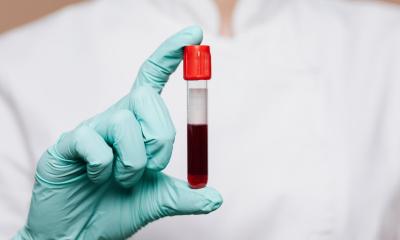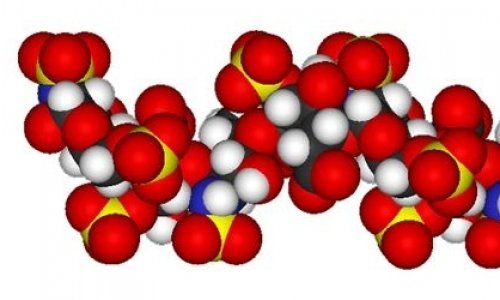Article • Benefits of standardisation
A mandatory comparability of results
Following its success in establishing reference methods and values for a range of simple molecules, International Federation of Clinical Chemistry and Laboratory Medicine’s Scientific Division takes on the challenge of harmonization for hormones and endocrine tests.
Report: John Brosky

As Professor Philippe Gillery takes up his role as Chair for the Scientific Division of the International Federation of Clinical Chemistry (IFCC) and Laboratory Medicine he is pleased to note there is, at this moment, a greater interest in cooperation among the various stakeholders for the drive toward a standardisation and harmonisation of results, which was not always the case. ‘It’s true that until recently many laboratories continued using methods established many years ago and considered that, when (and perhaps because) they are a university centre, they were doing a good job. Now this is changing,’ he explains.
According to Gillery, colleagues in clinical labs are increasingly aware of the importance of comparability of results from the evaluation and analysis of assays, and in those countries where laboratory accreditation according to different ISO norms is now mandatory, harmonisation of standards is understood to be crucial to that process. Among manufacturers, he said, the chain of traceability and value assignment for assays was not always strictly controlled because reference measurement procedures and materials were lacking, such that the resulting values for similar tests were not the same for all manufacturers. This has also changed.
A global regulatory pressure
This is a success for the monitoring of diabetic patients, as well as for the diagnosis of diabetes
Philippe Gillery
Among manufacturers there is a global pressure exerted by regulatory bodies, as well as a greater visibility of the process of standardisation undertaken by IFCC, which has helped demonstrate the importance of having common procedures and common reference systems. Having accepted the benefits of standardisation, manufacturers now work closely with the IFCC Scientific Division with a goal of harmonising assay outcomes. Laboratory colleagues, manufacturers and experts from diverse institutions, ‘all have to go in the same direction, which is to improve the comparability of results from one laboratory to another laboratory, as well as, over time, for the same patient,’ Gillery said. The first efforts of the IFCC Scientific Division, which focus on relatively simple molecules such as creatinine or cholesterol, have borne fruit.
A landmark achievement was establishing a reference measurement procedure for Haemoglobin (HbA1c), which is routinely assayed in patients with diabetes mellitus. ‘Today this is the only international anchor for HbA1c, which guarantees the comparability of results all over the world. This is a success for the monitoring of diabetic patients, as well as for the diagnosis of diabetes, and all manufacturers calibrate their assays against this reference measurement procedure,’ he said.
The IFCC Scientific Division is currently working in a more complex area, devoting its efforts to more complicated molecules, especially peptides, through its different Committees and Working Groups. An update on this work will be presented during EuroMedLab 2017 in Athens where Gillery will lead a two-hour symposium on standardisation in endocrinology. Following an overview of the Division’s progress to date, the discussion will focus on advances towards harmonisation of results of laboratory tests used to explore endocrine functions through assays for growth hormone, parathyroid hormone and thyroid hormones. The hormones present unique challenges to the clinical community for standardisation or harmonisation, he said, and the presentations will aid colleagues in gaining an appreciation of the issues as well as the achievements to date realised through cooperation and consensus.
Assuring sustainable standards
The IFCC Scientific Division’s work aims to assure standards that result in a sustainable performance, and also that the established values are accepted by the clinical community. ‘The clinical community is often less aware than the laboratory community that there can be a variability of values in assay results, and that there can be an imprecision in those values,’ Gillery said. Because a patient typically goes to the same testing laboratory each time, clinicians are not concerned by the possibility that there are variations from one laboratory to another. Yet, patients move, and today may receive results from a laboratory in another city or another country that are completely different than those of previous tests.’ The benefit to patients of IFCC’s effort is to assure consistent and comparable results regardless of where a test is performed, he explained, so as to establish common clinical thresholds across all methods.
Profile:
Philippe Gillery is Professor of Biochemistry and Molecular Biology at the Faculty of Medicine, University of Reims Champagne-Ardenne, and Head of the Biology and Pathology Department of the University Hospital of Reims, France. He has served as President of the Société Française de Biologie Clinique and is currently Chair of the Scientific Division of the International Federation of Clinical Chemistry and Laboratory Medicine (IFCC). He is Associate Editor of the Clinical Chemistry and Laboratory Medicine Journal and has published more than 200 articles in peer-reviewed Journals.
13.06.2017











